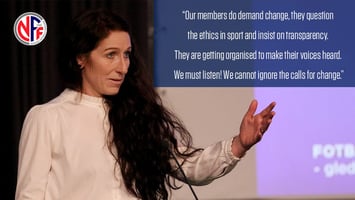Rebel Consulting. That was what I was going to call my company. In English because I think Bergen...
The Road to Success: Three Phases of Effective Strategy Development
Changing or improving the strategy may be necessary for organizations for various reasons, including changes in ownership, market conditions, increased competition, new technological opportunities or desired growth. Developing a successful strategy for your organization is a crucial task that requires careful planning and execution. This process often consists of three main phases: the Insight phase, the Workshop phase and the Implementation phase. But what does each of these phases look like in more detail and how can you maximize your chances of success using "Must Win Battles", "OKR" (Objectives and Key Results) and the Will it make the boat go faster principle.
The insight phase:
Interviews, market research and involved Management
In this initial phase, it is about gathering valuable information and insight that will form the basis of the strategy. It is critical to involve various stakeholders, including owners, board members, the management team, key people in the organization and shop stewards. The most important phases in the insight phase are:
- Interviews: Conduct in-depth interviews with the parties involved to understand their perspectives, concerns and aspirations. This gives you a holistic understanding of the organisation's current situation.
- Data Collection: Collect data and statistics relevant to your industry and market. This may include market research, competitor analysis and industry trends.
- SWOT Analysis: Identify the organization's strengths, weaknesses, opportunities and threats to create a solid foundation for strategy.
Workshop phase:
Create the Strategy with OKR, Must Win Battles and Will it make the boat go faster
When you have gathered all the necessary information in the insight phase, it is time to get together in a workshop to develop the strategy itself. In addition to the insights you've gathered, there are a few other elements to consider here:
- Vision, Mission and Values: Review and revise the organisation's vision, mission and values to ensure they are aligned with the new strategy.
- Market Changes: Analyze how the market is evolving and adapt your strategy in line with these changes. This may involve identifying new target groups, products or services.
- OKR (Objectives and Key Results): Implement the OKR framework to set clear objectives and define key results that need to be achieved. This helps focus efforts and measure progress in a clear way.
- Must Win Battles: Identify the critical challenges and opportunities facing the organization. Then select the "Must Win Battles" - the most important initiatives that will lead the organization towards success. This is closely related to OKR, but it may be good to identify it in addition.
- Will it make the boat go faster: This principle involves always assessing whether actions and decisions support the achievement of the organisation's goals. It means staying focused on what really matters and avoiding distractions that don't contribute to progress.
Implementation phases:
Set into Life with a Focus on Success and Organizational Culture
Now comes the most critical part: putting the strategy into action. Organizational culture plays an important role in this phase, as it can influence how the strategy is received and executed. To increase the likelihood of your success, there are several good tools to help you map and manage the culture, Barrett's being my favorite.
Unfortunately, there are several common reasons why strategy implementation can fail. To avoid these errors, you should consider the following measures:
-
Clear Communication: Make sure everyone in the organization understands the strategy and their role in achieving it. Build a culture of open communication and involvement.
-
Change Management: Strategy implementation is a form of organizational change. Use change management principles to manage resistance and support the change process. The culture must be adaptable and open to change.
-
Resource Allocation: Allocate adequate resources and closely monitor progress. The culture should promote efficient use of resources and continuous improvement.
Remember that strategy development is an iterative process that requires continuous evaluation and adaptation to keep up with changes in the market and the organization. With a culture that supports the strategy and a focus on "Will it make the boat go faster," you can increase the chances of achieving your organization's goals and ensure long-term success.



